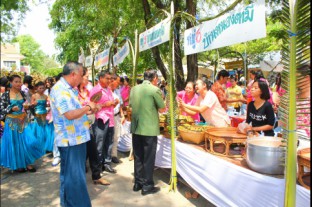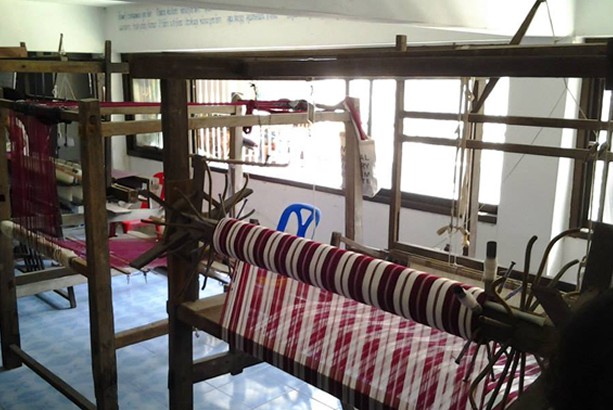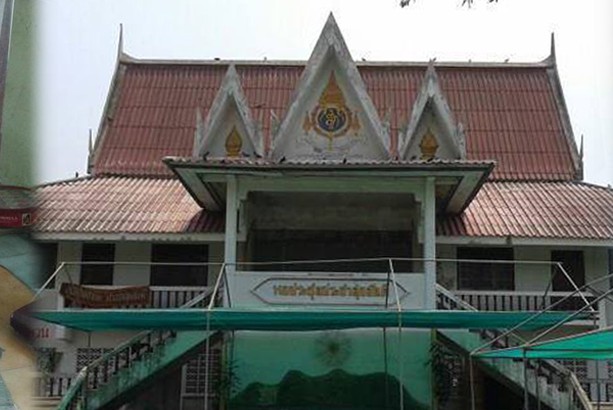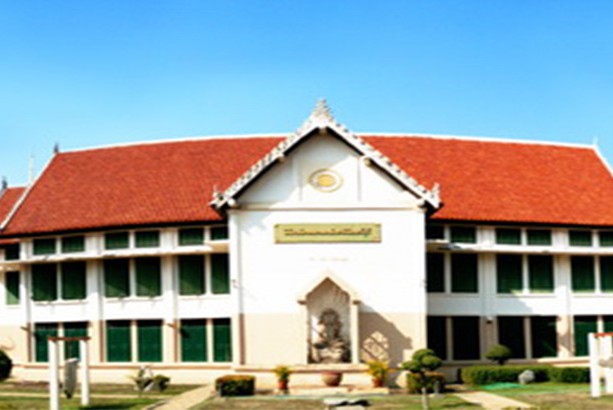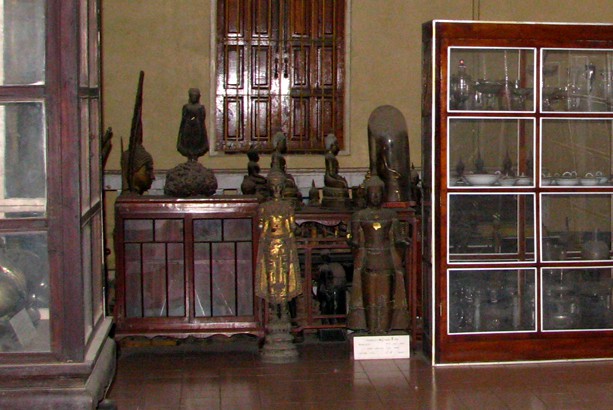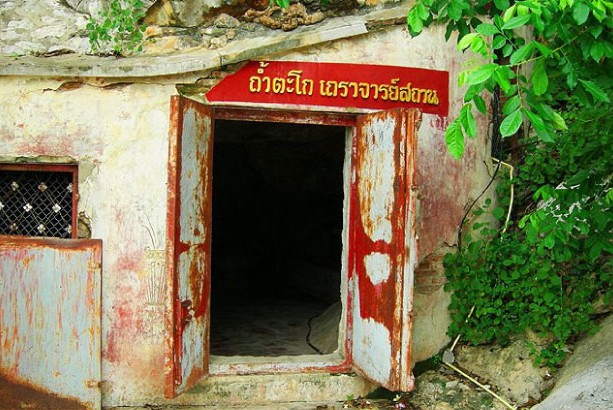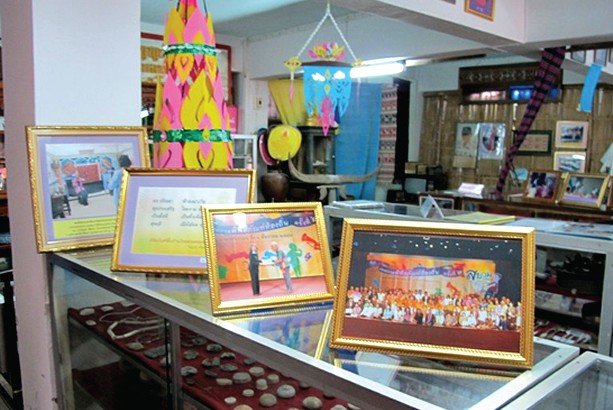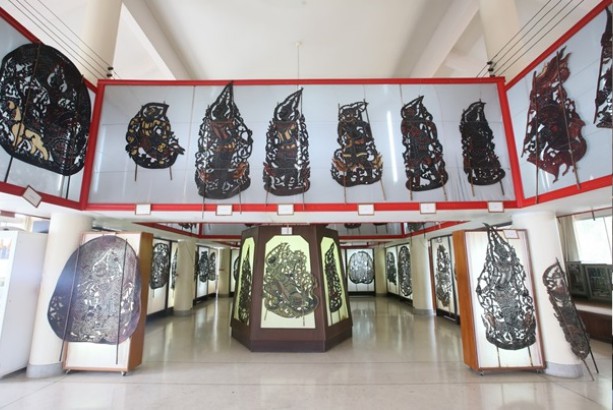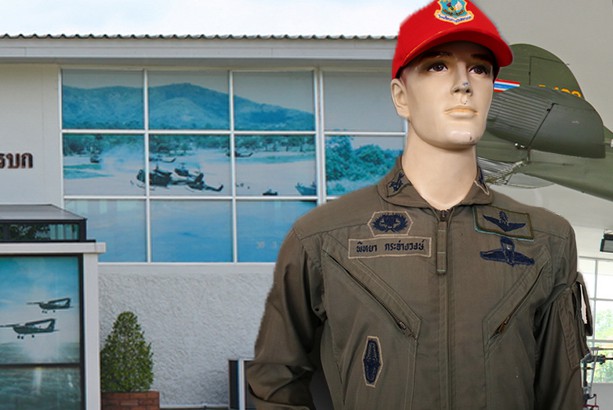Gallery
Information
“Chansen ancient town” was first discovered from the Aerial photography by Ajarn Nij Hinsheeranant in 1966. After that, there were studies of physical conditions and archeology of the town, and had been found that Chan Sen was an ancient town that occurred since prehistoric times and evidenced that people in early Dvaravati was settling down about 1500 years ago.
Provost Nisai Jariya-khun (a former abbot of Wat Chan Sen temple) realized the importance of the cultural heritage of the nation that was being destroyed. He had been collecting artifacts which illegally excavated from a broken collection keeping at Wat Chan Sen temple, where located in the annex area to Chan Sen ancient town, and setup to be Chan Sen museum. The exhibition is inside the Maha Chedi Si Chan Sen, a great Buddhist pagoda. The height base of pagoda space comprises with 3 main parts: the bell, The top of Mondop, where the relics of Buddha bone resided, and votive offerings to the Buddha shrines’ Mondop in enshrined Nakprok sandstone. This model simulated from Pastor Naga, a Lopburi sandstone Buddha. Inside the base are open area, dividing the first part for Buddhist activities and the second part consists of Chan Sen Museum exhibition, which consists of;
Point 1. Chan Sen with the environment. Displaying aerial photos demonstrated community and Chan Sen Ancient town. An aerial geography surrounding the town before building irrigation canals.
Point 2. Archaeological study of Chan Sen area. Displaying a map and photos of the excavations during 1968-1969.
Point 3. The development of community by the Lopburi - Pasak river. The exhibit artifacts such as bronze axes, buffalo mold clay, woven pattern pottery, Jewelry from sea shells, rock bracelets and so on.
Point 4. The development of town during Iron Age. Displays contacts with India by adopting technology for steel used. As well as exhibits of tools such as knives made of steel beak-shaped snout upset at the arrow heads, spears, etc.
Point 5. Archaeological excavations at Ban Chai. Exhibit of prehistoric human skeletons, Burial rites and beliefs.
Point 6. Chan Sen, the first town settled on the river Lopburi - Pasak. Exhibits a photo, layout of Chan Sen town by the river Lopburi - Pasak. The system of water trails in Chan Sen Ancient town.
Point 7. Chan Sen in Funan - Suvarnabhumi era. Displaying the seal of Tupper terracotta images. Pallava inscriptions Clay dolls and animal portraiture.
Point 8. Chan Sen in Dvaravati era. Displaying objects on religious beliefs, rituals occupations such as votive clay piece, Buddha Thammachak piece, rock amulet.
Point 9. Life of Chan Sen in Dvaravati era. The exhibition of artifacts in Dvaravati era, which was the highest civilization of the community, such as Chan Sen Ancient pottery, jewelry, bead bracelets.
Points 10. Chan Sen town after Dvaravati. The exhibit artifacts made of clay. This has been proven by experts to be the latter Dvaravati era.
Point 11. Chan Sen Restoration. Displaying pictures and equipment.
Point 12. Local wisdom by Grandfather Khoon Duang-ngern. Showcasing tools that Grandfather Khoon have made by himself for used on daily basis.
Point 13. Photograph gallery on environment changes after the use of new technologies which Causing environmental degradation.
Point 14. Provost Nisai Jariya-khun. Exhibition History and eight necessities of a Buddhist monk, bhuddha image, amulet, Pharmacopoeia astrological texts, etc. of Provost Nisai.
Management
Organization Museum
Important / Interesting artifacts
Photo of ivory comb Presumably made in the Indian civilization, during mid of the 10th century, unearthed at Chan Sen ancient town. Currently preserved at the National Museum.
Map
Address And Contact Number
Telephone : 0898036441 / 0928014008
Email : chansen_museum@hotmail.com
Operating hours
Wednesday to Sunday from 09.00 – 16.0 hrs. (A young tour guide services on Saturday – Sunday, and national holidays)
Admission fee
Free of charge
Getting There
By car from Bangkok, take Highway no. 4 (Petchakasem) via Prachuab Kirikhan, Chumphon, then take Highway 42 heading to Pattani, Narathiwat estimate total distance of 1,149 Km.
By train. trains departing from the railway station in Bangkok - Nakhon Sawan daily.
By bus, Bangkok - Nakhon Sawan. From the Northern Bus Terminal (Mo Chit 2) Kamphaeng Phet 2 Road every day, several times a day. It takes about 3 hours
*Transportation within Nakhon Sawan province consists of minibus ran several lines and minivan for transport to different districts.
Proper for General Public
Proper for Children
Credit Card
Advanced Booking
For group visit, a letter/ Phone call requesting for a group visit, must be made 7 working days in advance.
FACILITY
No




 ขยายขนาดตัวอักษร
ขยายขนาดตัวอักษร



 เพิ่มระยะห่างตัวอักษร
เพิ่มระยะห่างตัวอักษร

 เส้นช่วยในการอ่าน
เส้นช่วยในการอ่าน
 เน้นการเชื่อมโยง
เน้นการเชื่อมโยง
 ปรับชุดสี
ปรับชุดสี








 NIGHT AT THE MUSEUM FESTIVAL
NIGHT AT THE MUSEUM FESTIVAL  E-Shopping
E-Shopping 
